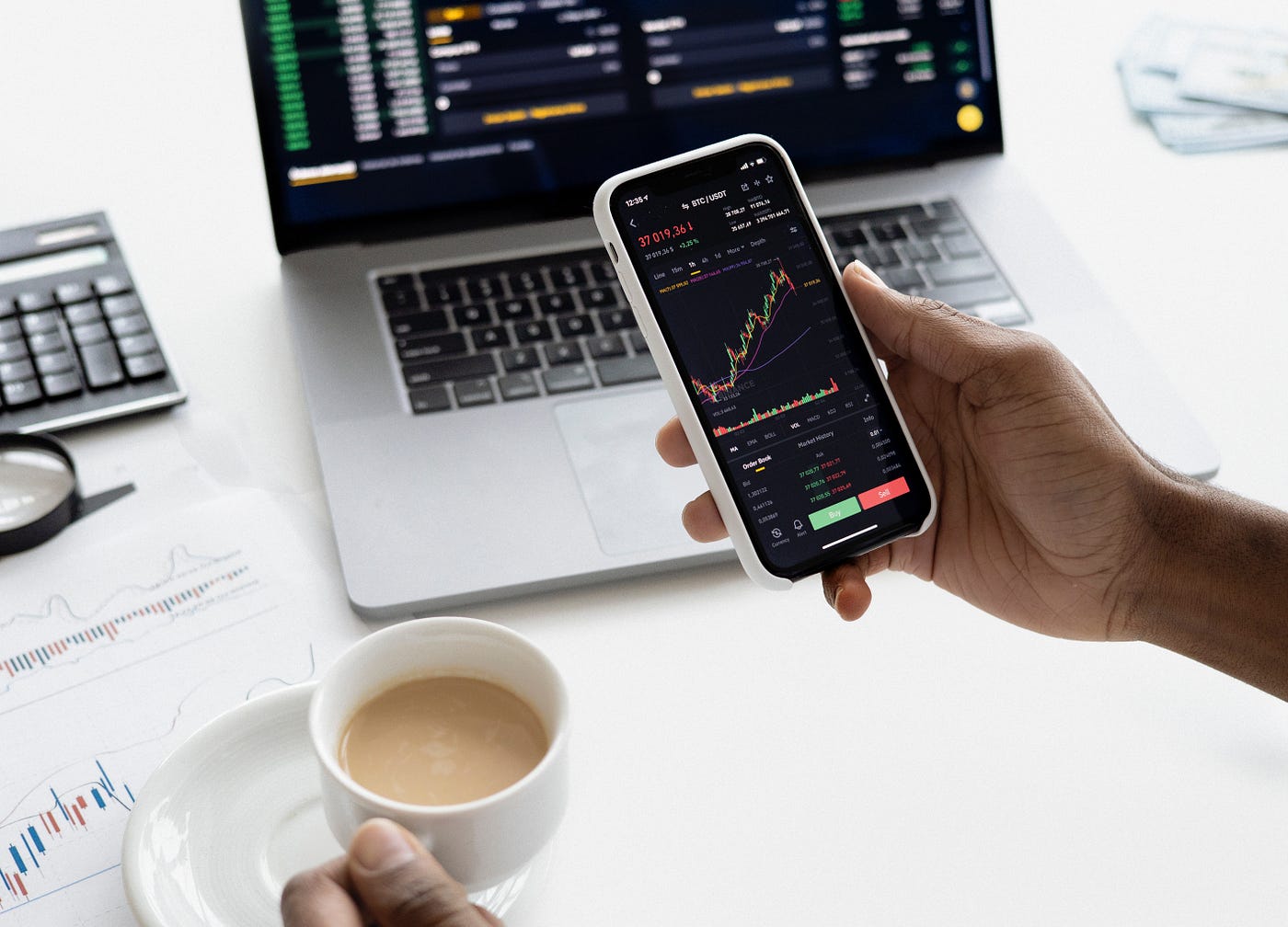

Finance
How To Buy Korean Stocks
Published: January 17, 2024
Learn the process of purchasing Korean stocks and delve into the world of finance with our comprehensive guide on how to buy Korean stocks.
(Many of the links in this article redirect to a specific reviewed product. Your purchase of these products through affiliate links helps to generate commission for LiveWell, at no extra cost. Learn more)
Table of Contents
Introduction
Investing in the stock market can be an exciting and rewarding endeavor. It allows you to grow your wealth and potentially earn significant returns on your investment. If you are interested in exploring new investment opportunities, you may want to consider buying Korean stocks. South Korea’s economy has experienced remarkable growth over the years, making it an attractive market for investors.
However, before you jump into the world of Korean stocks, it’s important to understand the process and steps involved in making your investment. This article will guide you through the process of buying Korean stocks and give you a better understanding of how to navigate the Korean stock market.
Whether you are a seasoned investor or new to the world of stock trading, our comprehensive guide will provide you with the information you need to get started. From opening a brokerage account to researching Korean companies and executing your trades, we will cover it all.
So, if you’re ready to explore the world of Korean stocks and potentially tap into the vibrant Korean market, let’s get started with step one: opening a brokerage account.
Step 1: Open a brokerage account
Before you can start buying Korean stocks, you’ll need to open a brokerage account that gives you access to the Korean stock market. A brokerage account is a financial account that allows you to buy and sell stocks, bonds, and other securities through a brokerage firm.
There are several online brokerage platforms available that provide easy access to Korean stocks. It’s important to choose a reputable and trustworthy brokerage that offers a seamless trading experience and a range of investment options.
To open a brokerage account, you typically need to follow these steps:
- Research and compare brokerage platforms: Take the time to research and compare different brokerage platforms to find one that suits your needs. Look for platforms that offer access to the Korean stock market, competitive commissions, user-friendly interfaces, and good customer support.
- Complete the account application: Once you’ve chosen a brokerage platform, you’ll need to complete the account application process. This usually involves providing personal details, such as your name, address, social security number (or equivalent), and employment information.
- Submit required documents: In order to comply with regulatory requirements, you may need to submit certain documents, such as a copy of your identification (passport or driver’s license) and proof of address (utility bill or bank statement).
- Fund your account: After your account is approved, you’ll need to fund it. Most brokerage platforms offer various funding options, including bank transfers, wire transfers, and credit/debit card payments. Choose the option that suits you best and transfer the desired amount of funds into your account.
- Set up security measures: As an added layer of protection, it’s important to set up security measures for your brokerage account. This can include setting up two-factor authentication and choosing a strong, unique password to prevent unauthorized access.
Once your brokerage account is set up and funded, you are ready to move on to the next step: researching Korean stocks.
Step 2: Research Korean stocks
Researching Korean stocks is a crucial step in the investment process. It allows you to gain insights into the financial health, performance, and future prospects of the companies you are considering investing in. Conducting thorough research will help you make informed decisions and increase your chances of making profitable investments in the Korean stock market.
Here are some key factors to consider when researching Korean stocks:
- Company fundamentals: Start by analyzing the fundamental aspects of the companies you are interested in. Look at their revenue growth, earnings per share, debt levels, and market capitalization. Understanding a company’s financial health will give you a sense of its stability and potential for growth.
- Industry analysis: Consider the industry in which the company operates. Look at trends, competition, and market conditions. A company operating in a growing industry with limited competition may have better prospects for long-term success.
- Management team: Evaluate the expertise and track record of the company’s management team. Check if they have a history of successfully running the business and delivering value to shareholders.
- Corporate governance: Examine the company’s corporate governance practices, such as its board structure, transparency levels, and shareholder rights. Strong corporate governance is indicative of a well-managed company.
- Market sentiment: Stay updated on market sentiment related to Korean stocks. Monitor news, analyst reports, and social media discussions to gauge market expectations and potential risks.
Utilize online research tools and platforms to gather information about Korean stocks. These resources provide access to financial statements, annual reports, analyst coverage, and other relevant data that can aid in your decision-making process.
Consider diversifying your portfolio by selecting stocks from different sectors and industries. This can help mitigate risks and potentially enhance your returns. Be mindful of your investment goals, risk tolerance, and time horizon when selecting stocks.
Once you have completed your research, it’s time to move on to the next step: determining your investment strategy.
Step 3: Determine your investment strategy
When it comes to investing in Korean stocks, having a well-defined investment strategy is crucial. It helps you stay focused, make informed decisions, and align your investments with your financial goals. Before you start buying stocks, take the time to determine your investment strategy.
Here are a few key considerations when deciding on your investment strategy:
- Investment goals: Clearly define your investment goals. Are you investing for the long term to fund your retirement or for shorter-term financial goals? Knowing your objectives will help shape your investment strategy.
- Risk tolerance: Determine your risk tolerance level. Are you comfortable with more aggressive investments that have the potential for higher returns but also higher volatility? Or do you prefer a more conservative approach? Assessing your risk tolerance will guide your investment decisions.
- Time horizon: Consider your investment time horizon. How long do you intend to hold your investments before needing to access the funds? This will influence the types of stocks you choose and your investment strategy.
- Asset allocation: Decide on the allocation of your investment funds across different asset classes, such as stocks, bonds, and cash. Asset allocation helps diversify your portfolio and manage risk.
- Investment style: Determine your preferred investment style. Are you more inclined towards value investing, where you seek undervalued stocks with growth potential? Or do you prefer a growth-oriented approach, focusing on companies with higher potential for capital appreciation?
It’s important to remember that your investment strategy should be aligned with your individual financial situation and risk profile. Consider consulting with a financial advisor who can provide personalized guidance based on your specific needs and circumstances.
Once you have determined your investment strategy, it’s time to move on to the next step: placing your order to buy Korean stocks.
Step 4: Place your order
Now that you have researched Korean stocks and formulated your investment strategy, it’s time to place your order and buy the stocks you have chosen.
Here are the steps to follow when placing your order:
- Choose the right order type: Determine the type of order you want to place. The most common order types are market orders and limit orders. A market order is executed immediately at the current market price, while a limit order allows you to set a specific price at which you are willing to buy the stock. Choose the order type that aligns with your investment strategy.
- Specify the quantity: Decide how many shares of the stock you want to purchase. Consider your budget, the stock’s price, and the diversification of your portfolio when determining the quantity.
- Set the price: If you are placing a limit order, specify the price you are willing to pay for the stock. This ensures that you buy the stock at your desired price, but it may take longer for the order to be executed if the market price does not reach your specified limit price.
- Review and confirm: Double-check all the details of your order, including the stock symbol, quantity, order type, and price. Make sure everything is correct before confirming the order.
- Execute the order: Once you are confident with your order details, submit the order to your brokerage platform. The platform will process the order and execute it according to your instructions.
Keep in mind that the stock market operates during specific trading hours, typically on weekdays. Orders placed outside of these hours will be queued and executed when the market opens.
After placing your order, it may take some time for the transaction to settle and for the stocks to appear in your brokerage account. This timeline can vary depending on the brokerage platform and market conditions.
Now that you have successfully placed your order, it’s important to monitor your investments regularly.
Step 5: Monitor your investments
Once you have purchased Korean stocks, it’s important to actively monitor your investments to stay informed about any developments that may impact their performance. Monitoring your investments allows you to make timely decisions and take necessary actions to protect and optimize your portfolio.
Here are some key aspects to consider when monitoring your investments:
- Stay updated with company news: Regularly check for news updates and announcements related to the companies in which you have invested. This includes earnings reports, mergers and acquisitions, changes in management, product launches, and any other significant events that could affect the company’s performance and stock prices.
- Monitor market trends and indicators: Keep an eye on general market trends and economic indicators that could impact the overall market and your investments. This includes monitoring economic data releases, interest rate changes, geopolitical events, and industry trends.
- Review financial statements: Periodically review the financial statements of the companies you have invested in, such as their balance sheets, income statements, and cash flow statements. This will give you insights into their financial health and performance.
- Assess portfolio performance: Regularly evaluate the performance of your portfolio as a whole. Track the returns of your investments over time and compare them to relevant benchmarks. This will help you gauge the success of your investment strategy and make any necessary adjustments.
- Consider rebalancing: As market conditions and the value of your investments fluctuate, it may be necessary to rebalance your portfolio. Rebalancing involves adjusting the allocation of your investments to maintain your desired asset allocation. This ensures that your portfolio remains aligned with your investment goals and risk tolerance.
Utilize the tools and resources provided by your brokerage platform to conveniently monitor and track your investments. These platforms often offer portfolio tracking features, real-time stock quotes, and customizable alerts to keep you updated on important developments.
Remember that investing in the stock market involves risks, and the value of your investments can fluctuate. It’s essential to approach investment monitoring with a long-term perspective and make well-informed decisions based on thorough analysis and research.
Congratulations! You have successfully completed the steps to buy Korean stocks and are now equipped to navigate the Korean stock market.
Conclusion
Investing in Korean stocks can be an exciting and potentially profitable endeavor. By following the steps outlined in this guide, you are well-prepared to embark on your journey into the Korean stock market.
Opening a brokerage account and conducting thorough research are essential first steps. A reliable brokerage platform will provide you with the necessary tools and access to the Korean stock market, while diligent research will help you make informed investment decisions.
Once you have opened your account and conducted research, it’s important to determine your investment strategy. Consider your goals, risk tolerance, and time horizon in order to develop a strategy that aligns with your needs and preferences.
Placing your order is the next step, allowing you to execute your investment choices. Consider the right order type, quantity, and price, and carefully review and confirm your order details before submission.
After your order is executed and you become a shareholder, it’s imperative to monitor your investments actively. Stay updated with company news, market trends, and financial indicators. Regularly assess portfolio performance and consider rebalancing if necessary.
Remember, investing in stocks carries risks, and the value of your investments can fluctuate. It’s important to approach investing with a long-term perspective, diversify your portfolio, and make well-informed decisions based on thorough research and analysis.
Now that you are armed with the knowledge and understanding of how to buy Korean stocks, you are ready to take the next step and start exploring the exciting opportunities the Korean stock market has to offer.














